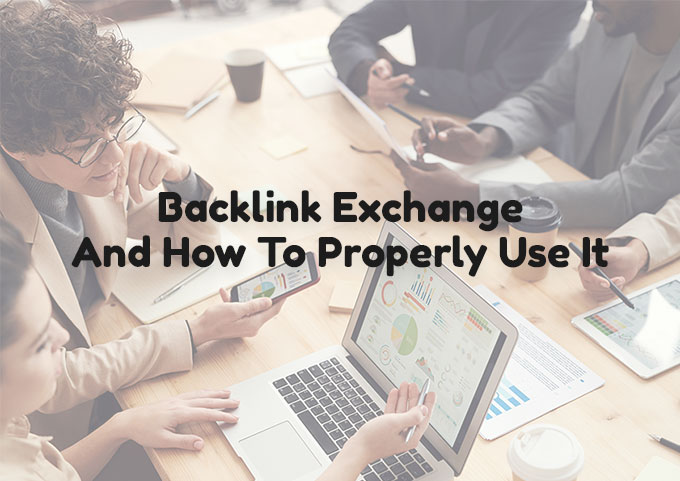
High-quality backlinks are the backbone of every good SEO strategy. However, there are countless ways that you can build links, so how do you choose the right one? You may have heard of backlink exchanges – but are they a safe and legitimate way to build links in 2023 and beyond?
A backlink exchange is just that – two or more websites exchanging backlinks to help each other with their SEO efforts. Today, we will show you everything you need to know about exchanging links. Find out if it’s good for your website, what the main types are, and what you should (not) do.
What is a backlink exchange?
Backlink exchange is an agreement between two or more websites to receive backlinks from each other. One website gives a backlink to another; the other website either returns the favor or returns the link from another website. We’ll cover the difference between these cases in a moment.
The purpose of backlink exchanges is to benefit both websites’ online presence and SEO efforts. With an additional backlink, both websites become more authoritative in the eyes of search engines. Effectively, it becomes easier for both websites to rank well for their desired terms in search engine results pages.
There are two main reasons why exchanging backlinks is a popular strategy.
- It’s relatively easy to do and requires only the basic knowledge of SEO and link exchange best practices
- Depending on how you do it, it can be cheap or completely free
There are some risks with link exchanges too. When not done right, they could result in manual penalties from search engines like Google. Also, if you’re not careful with whom you’re exchanging links (and what kind of links you get), those links could do more harm than good.
Today, we will help you stay on the safe side of backlink exchanges.
What are the different types of backlink exchanges?
Depending on how many parties are involved and what the arrangements are, there are multiple types of link exchanges.
A-B exchange (reciprocal exchange)
This is the most basic form of link exchange online. Site A gives a link to website B. Then website B gives a link to website A. It’s as simple as that.
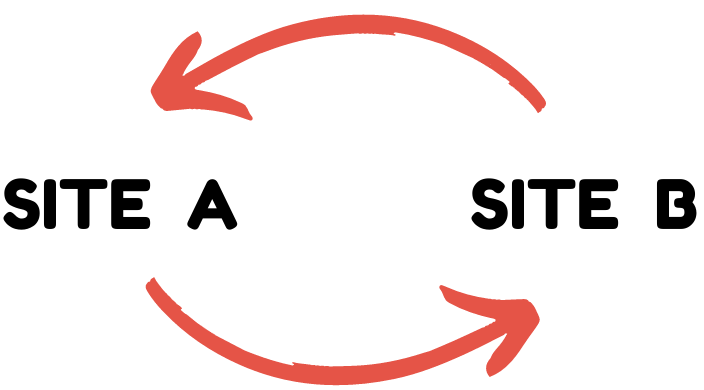
There is just one slight problem. Reciprocal exchanges in particular are flagged as “link schemes” by Google and there is a possibility that if you do a lot of them, you might end up getting hit with a penalty. Keyword here is “might”.
According to research by Ahrefs, a well-known SEO tool, almost half of all top-performing pages on the internet have some sort of reciprocal links built to them. In other words, you can get reciprocal links and still be safe – as these links hold SEO value.
So, should you do reciprocal link building? Yes, if you do it naturally and not to the point where these link building efforts become obvious to search engines. In fact, many websites will return a link naturally on their own, without being asked, so this is not a spammy tactic that will hurt your site’s ranking.
However, if you want to stay on the safe side, you can try the next technique on our list.
A-B-C link exchange
A-B-C exchanges or three-way link exchanges came about as a way to bypass the danger of reciprocal linking. Here is how it works:
- Website A gives a link to website B
- Website B gives a link to website C
- Website C gives a link to website A
In other words, three parties have exchanged links and no reciprocal change of inbound links occurs.

Can search engines such as Google figure out that a “link scheme” is taking place between website owners? Probably, but it becomes much more difficult with three websites involved in the exchange process.
Just like with other types of exchanges, it’s essential that all partners have high-quality websites.
Private Influencer Networks (PINs)
In this setup, there are a handful of companies helping each other build backlinks. Most commonly, PINs consist of 4+ company members.
The main idea is that members of PINs send backlinks and organic traffic to each other rather than trying to build links only for themselves. For example, website A can write a guest post and include websites B and C in the post (with links). Then websites B and C can return the favor at a later point.
Unlike PBNs, PINs are legitimate networks of websites helping each other out and pooling their resources together for the common good. For the best effects, it’s necessary for the participating websites not to be competitors to each other. For example, websites in the SaaS industry, but not in competing niches.
Are link exchanges good for SEO? And what does Google have to say about it?
As you can see from Ahrefs’ case study, a large portion of websites that perform great do link exchanges as a part of their SEO strategy. Moreover, many link exchanges (especially reciprocal) happen naturally. When you link to a website, there is a good chance that they will recognize it and link back to you too.
You should be mindful of doing excessive link exchanges if you want to fly under Google’s radar. The occasional link exchange is good, but using it as your only method can be considered as a black hat link building strategy.
While link exchanges are a part of “link schemes” according to Google’s webmaster guidelines, they are very much tolerated in practice. Just like any other form of link building, it helps increase the authority of your website, as well as the chances of ranking for a given keyword. And link exchanges have survived many algorithm updates, so it’s safe to say that they are good in Google’s book.
The caveat? You have to do backlink exchanges the right way.
Where to find link exchanges
You don’t need extensive knowledge of SEO to be able to do link exchanges. However, you do need to have good backlink exchange partners. Great SEOs and link builders take years to build a network of trusted, reliable partners. However, you too can start today.
First, look at Facebook groups. There are various SEO communities where you can find other link builders representing companies and websites. These are people who are actively looking for partners like yourself. Other social media networks such as LinkedIn are worth a shot too.
One example is the B2B Bloggers Boost group for SEOs and link builders in the SaaS community.
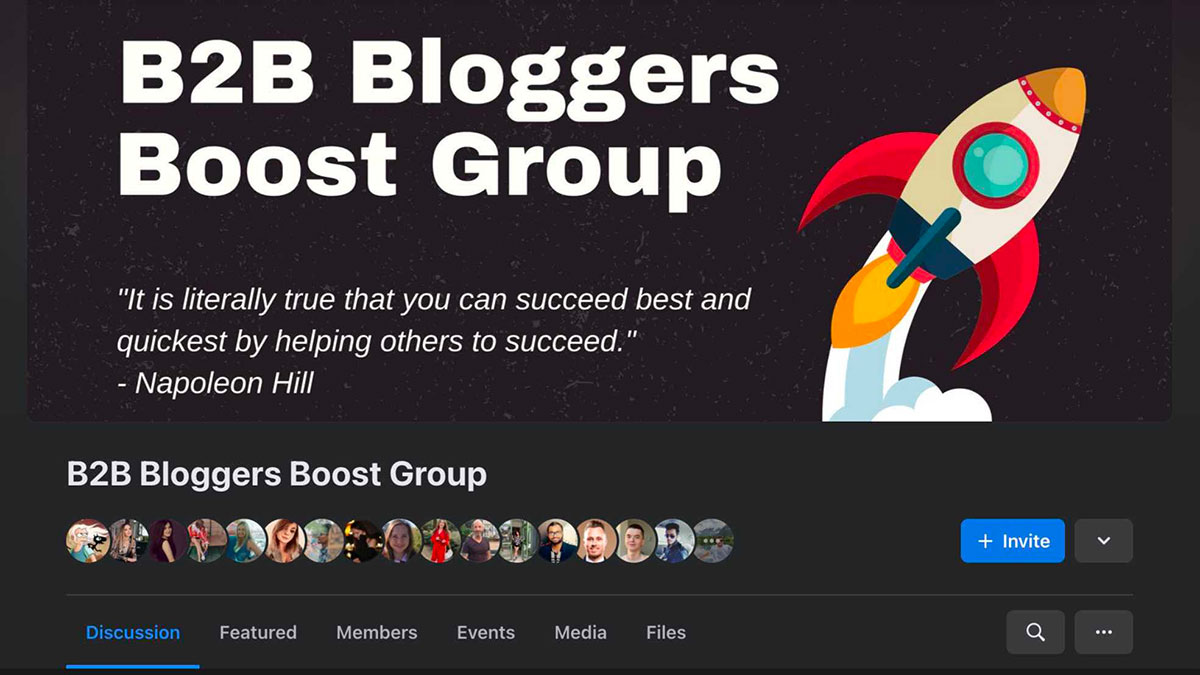
You can also take a look at Slack groups. This is another increasingly popular channel for link builders, but it’s not exactly easy to find them with a public search. Once you make your first partnerships, ask your partners about the Slack groups they’re members of, to get valuable information about white hat link builders you can trust.
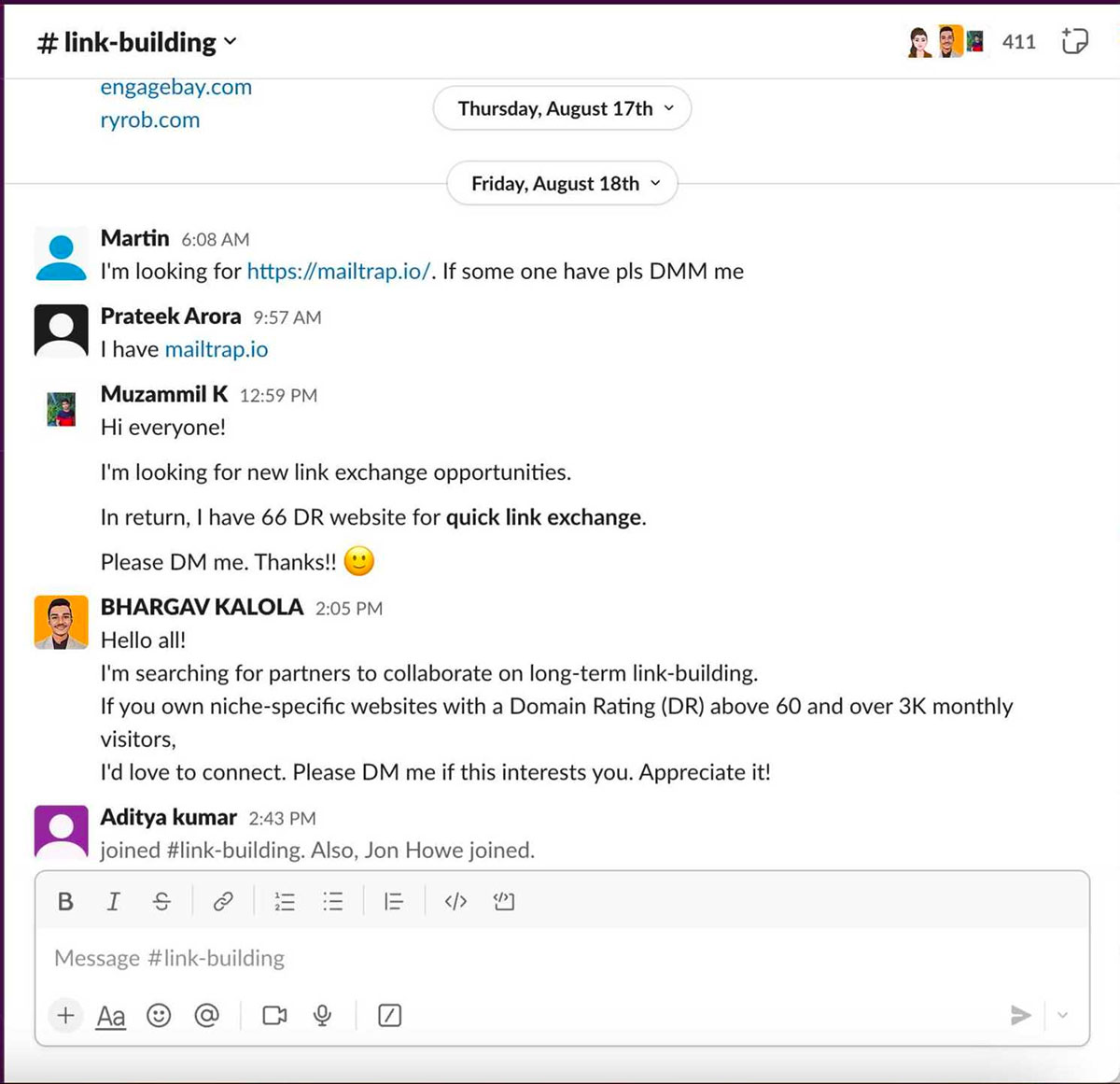
Discord can also be a good place to find exchange partners – so make sure to do a site-wide directory search for communities you can join. Once you find a partner you could potentially work with, do some outreach to see if they have any link exchange opportunities for you.
This begs another question – what’s a good backlink exchange partner and how do you spot a good opportunity for link swaps?
Best practices for exchanging backlinks
Just because someone offers to exchange links with you, this does not mean that it’s a good opportunity that your website will have SEO benefits from. Here is how to spot a partnership that is worth considering.
Make sure the website and the placement are relevant
If you’re a SaaS website selling invoicing software, try to get links from partners in the SaaS industry. Alternatively, if the website is not a SaaS one, the link should come from an article or page talking about invoicing software or similar web pages.
For example, you could get a link from a coffee maker website to your invoicing software page. Even though the website’s metrics could be impressive, the link won’t have much value.
Besides website metrics (such as domain rating and traffic), search engines such as Google look at the relevance of a page before determining how valuable the link is.
In short, not every link is great, even if it comes from an amazing website that ranks well in Google search results.
Take a look at the page you’re getting the link from
Someone agrees to give you a link. Great news! Now, let’s take a look at the page they are linking out from. You want to make sure:
- That your link is not placed in awkward spots such as the footer, the banner, the conclusion of an article, or similar
- That the link is dofollow and not nofollow, so you can get some of that link juice
- That your link is placed in a contextually relevant paragraph and sentence
- That the link is ideally placed somewhere near the top of a page
- That the page or at least the website the link is coming from has at least some traffic
- That the anchor text for your link is relevant and added according to your instructions
- That the page where your link is located does not have too many other outbound links
- That you’re getting a link from a page with high-quality content and not random gibberish that no reader will find useful
- That the website has a great design and user experience
With all of these things taken care of, you’ll be sure you’re getting a link that helps your SEO efforts. And besides links from quality sites, you may also get some referral traffic if the readers on those pages click through to your website.
Take a look at the page metrics
Notice that metrics are not at the top of our priority list? This is because metrics such as domain rating and domain authority can be easily manipulated.
For example, you could have a low-quality, irrelevant link from a website with a domain rating of 90. On the other hand, a super-relevant link from your niche with a DR of 40 could make a massive difference for your link profile if it has relevant, great content.
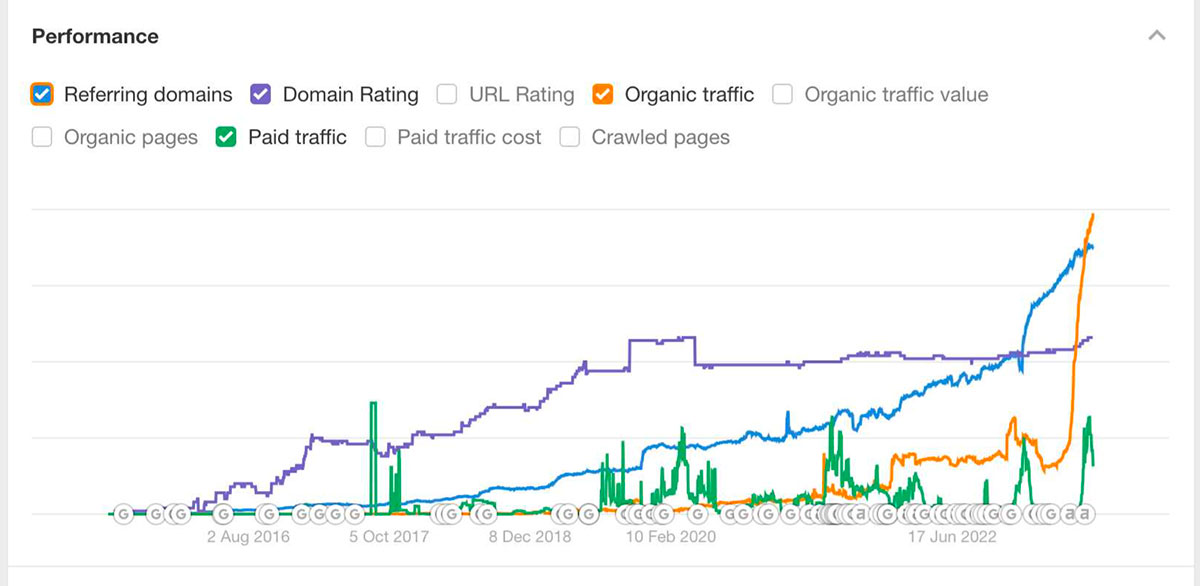
What slow and steady website growth looks like
However, metrics do tell a story and you should pay attention to the following:
- Website traffic (visits per month)
- Website traffic country split (which countries the majority of traffic is coming from)
- Traffic growth over time (you want to see a steady increase over time without sudden spikes going up or down)
- Domain rating (the higher, the better)
- Inbound links (they should have a good number of natural links in their backlink profile)
- Outgoing links (they should be linking out to other websites similar to yours)
If all of these seem in order, you can proceed with the link exchange and hope for a good link in return for the one you give.
Wrapping up
Creating a great backlink profile and improving your search engine rankings is easy with backlink exchanges. However, just like any other link building method, it requires plenty of learning and practice before it starts bringing in tangible results.
And if you don’t have the time to deal with any of that, you can trust us to do the heavy lifting for you. Link exchanges are just one of the many methods we use at ReportCard to build high-quality links for your website.
Want to learn more? Book a call with us so we can talk!



